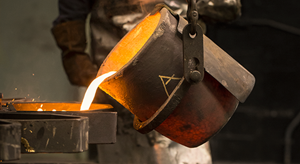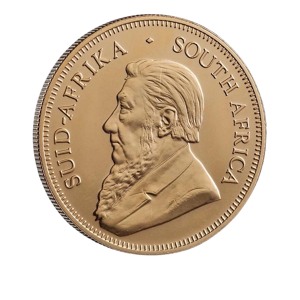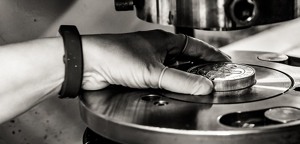Tavex uses cookies to ensure website functionality and improve your user experience. Collecting data from cookies helps us provide the best experience for you, keeps your account secure and allows us to personalise advert content. You can find out more in our cookie policy.
Please select what cookies you allow us to use
Cookies are small files of letters and digits downloaded and saved on your computer or another device (for instance, a mobile phone, a tablet) and saved in your browser while you visit a website. They can be used to track the pages you visit on the website, save the information you enter or remember your preferences such as language settings as long as you’re browsing the website.
| Cookie name | Cookie description | Cookie duration |
|---|---|---|
| tavex_cookie_consent | Stores cookie consent options selected | 60 weeks |
| tavex_customer | Tavex customer ID | 30 days |
| wp-wpml_current_language | Stores selected language | 1 day |
| AWSALB | AWS ALB sticky session cookie | 6 days |
| AWSALBCORS | AWS ALB sticky session cookie | 6 days |
| NO_CACHE | Used to disable page caching | 1 day |
| PHPSESSID | Identifier for PHP session | Session |
| latest_news | Helps to keep notifications relevant by storing the latest news shown | 29 days |
| latest_news_flash | Helps to keep notifications relevant by storing the latest news shown | 29 days |
| tavex_recently_viewed_products | List of recently viewed products | 1 day |
| tavex_compare_amount | Number of items in product comparison view | 1 day |
| Cookie name | Cookie description | Cookie duration |
|---|---|---|
| chart-widget-tab-*-*-* | Remembers last chart options (i.e currency, time period, etc) | 29 days |
| archive_layout | Stores selected product layout on category pages | 1 day |
| Cookie name | Cookie description | Cookie duration |
|---|---|---|
| cartstack.com-* | Used for tracking abandoned shopping carts | 1 year |
| _omappvp | Used by OptinMonster for determining new vs. returning visitors. Expires in 11 years | 11 years |
| _omappvs | Used by OptinMonster for determining when a new visitor becomes a returning visitor | Session |
| om* | Used by OptinMonster to track interactions with campaigns | Persistent |
| Cookie name | Cookie description | Cookie duration |
|---|---|---|
| _ga | Used to distinguish users | 2 years |
| _gid | Used to distinguish users | 24 hours |
| _ga_* | Used to persist session state | 2 years |
| _gac_* | Contains campaign related information | 90 days |
| _gat_gtag_* | Used to throttle request rate | 1 minute |
| _fbc | Facebook advertisement cookie | 2 years |
| _fbp | Facebook cookie for distinguishing unique users | 2 years |
How Are Gold Bullion Coins Made

In the world of precious metals, gold has long been considered a symbol of wealth and a store of value. One of the most popular forms in which gold is traded and collected is through gold bullion coins. These coins not only hold intrinsic value but also boast intricate designs and historical significance.
Have you ever wondered how these gold bullion coins are made? In this article, we will delve into the interesting process of creating gold bullion coins, from the initial stages of melting gold to the final striking of the coin.
1) Melting the Gold
The journey of a gold bullion coin begins with the melting of gold. Pure gold is heated to its melting point, which is approximately 1,948 degrees Fahrenheit (1,064 degrees Celsius).

At this temperature, gold transforms from its solid state into a liquid form. This molten gold serves as the foundation for the coin’s creation.
2) Alloying the Gold
Pure gold is incredibly soft and not suitable for making coins that can withstand circulation. To enhance durability, gold is alloyed with other metals such as copper or silver. The specific alloying composition varies from one mint to another and is often a closely guarded secret.

The chosen alloy not only increases the coin’s strength but also affects its colour and appearance. For example, that is why there is a colour difference between the Gold South African Krugerrand and the Gold British Britannia. The Krugerrand consists of 22 karat, and the Britannia is 24 karat gold.
3) Rolling and Cutting
Once the gold alloy is prepared, it is rolled into thin sheets or strips. These sheets are then cut into precise blanks or planchets.
Precision is crucial during this step to ensure uniformity in the coin’s size and weight
These planchets are typically circular and have the approximate dimensions of the final coin.
4) Coin Design and Engraving

The design of a gold bullion coin plays a significant role in its attractiveness and collectibility. Talented artists and engravers work together to create intricate and captivating designs that adorn the coin’s obverse and reverse sides. These designs often feature national symbols, historical figures, or iconic landmarks.
5) Master Die Creation
Once the design is finalised, a master die is created.
The master die is meticulously engraved with the coin’s design in high relief, capturing every intricate detail
This die serves as a template for producing the working dies used in the coin minting process.
6) Striking the Coin

With the master die ready, the actual minting process begins. Gold planchets are loaded into a coin press, and the master die is used to create working dies. These working dies are used to strike the planchets, transferring the design onto the coins. The immense pressure applied during this process ensures that the design is deeply impressed into the metal, creating a sharp and detailed image.
7) Quality Control
Quality control is an essential step in the production of gold bullion coins. Each newly struck coin is carefully inspected for any imperfections, such as scratches or irregularities in the design.
Any flawed coins are removed from circulation to maintain the coin’s integrity and value
8) Coin Finishing
After the coins have been struck, they may undergo various finishing processes, such as polishing or frosting, to enhance their visual appeal.
These finishing touches add depth and contrast to the design, making the coins even more visually striking.
Packaging and Distribution
Once the gold bullion coins are deemed of high quality and finish, they are packaged in protective capsules or sleeves to preserve their pristine condition.
These coins are then distributed to authorised dealers (such as Tavex) or directly sold to collectors and investors.
Takeaways
The process of making gold bullion coins is a meticulous and fascinating journey that combines artistry and precision. From melting the gold, striking the coins, to minting the coins with intricate designs, every step is crucial in creating these valuable and sought-after collectibles.
Additionally, different mints may use different types of gold in their products. For example, The Royal Mints gold products consist of a 24 karat fineness of gold, whereas the South African Krugerrand is minted with some copper alloys, changing the appearance of the coin.



















